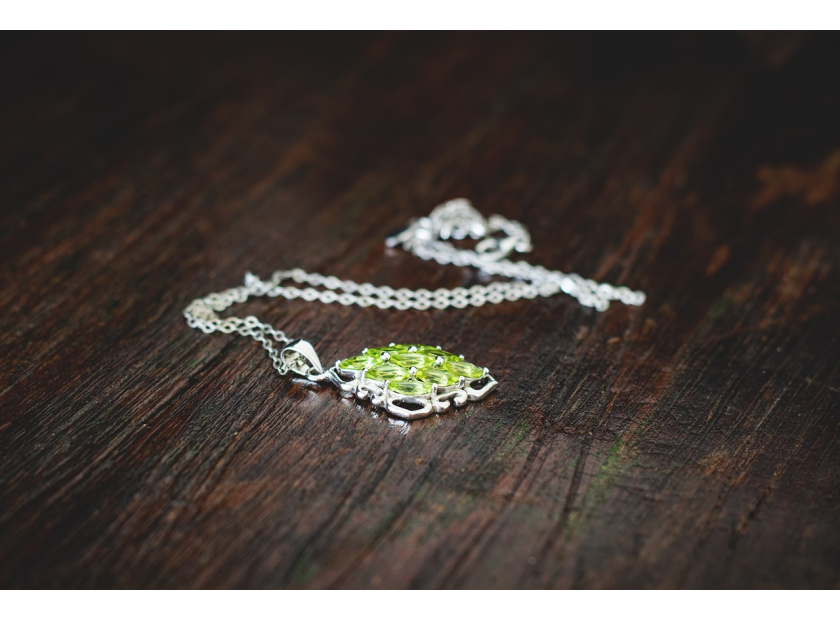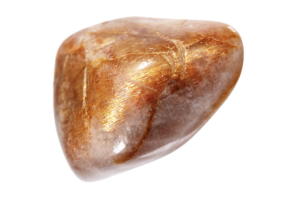USD
/
USD
/
Shipping to:
Currency:
How to Identify a Genuine Peridot: Expert Tips for Spotting the Real Gem
Peridot, with its captivating green hue, has enchanted jewelry enthusiasts for centuries.
However, the market is full of imitations, making it essential to distinguish genuine peridot from fakes.
This guide will walk you through the key characteristics of authentic peridot and offer practical tips to ensure your gemstone is the real deal.
Introduction to Peridot
Peridot is a gemstone that has been cherished since ancient times, often associated with prosperity and good fortune.
Its vibrant green color makes it a popular choice in various jewelry pieces, from rings to necklaces.
Given its popularity, the market has seen a surge in counterfeit versions, making it crucial for buyers to be equipped with the knowledge to identify genuine peridot.
What is Peridot?
Peridot is the gem-quality variety of the mineral olivine.
It forms deep within the Earth's mantle and is brought to the surface through volcanic activity.
Notably, peridot is one of the few gemstones that occur in only one color—green.
However, the exact shade can vary from yellowish-green to olive, depending on the iron content within the stone.
Why You Should Learn to Spot a Real Peridot
The gemstone market is full of synthetic and imitation stones.
Materials like green glass or other green gemstones are often passed off as peridot.
Being able to identify genuine peridot ensures you get value for your money and helps maintain the integrity of your jewelry collection.
Key Characteristics of a Genuine Peridot
Natural Color Tones of Peridot
Authentic peridot showcases a vibrant green color with possible hints of yellow or brown.
The most prized peridots exhibit a pure green hue without secondary tones.
It's important to observe the stone under various lighting conditions; genuine peridot maintains its color consistency regardless of the light source.
Clarity and Inclusions
While high-quality peridots are relatively free from visible inclusions, it's common for these gemstones to contain unique characteristics known as "lily pad" inclusions—disk-shaped fractures surrounding a mineral crystal.
The presence of such inclusions can indicate authenticity.
In contrast, imitation stones, especially those made of glass, may contain bubbles or appear flawlessly clear, which is uncommon for natural peridot.
Hardness and Durability
Peridot ranks between 6.5 and 7 on the Mohs hardness scale, making it moderately durable but still susceptible to scratches from harder materials.
This means that while peridot is suitable for everyday wear, it needs some care to maintain its luster.
Refractive Index and Double Refraction
A distinctive feature of peridot is its strong double refraction.
When you look closely through the gemstone, especially at its facets, you might notice a doubling effect.
This optical property can be a telltale sign of genuine peridot.
Common Peridot Imitations and How to Spot Them
Green Glass
Green glass is a common peridot imitator.
Unlike real peridot, glass often contains tiny bubbles and lacks the double refraction characteristic.
Also, glass imitations may look cloudy or too perfect, especially over time.
Synthetic Peridot
Lab-created peridots are rare but do exist.
These synthetics closely mimic the chemical composition of natural peridot but usually lack natural inclusions.
Advanced gemological equipment is typically required to confirm authenticity in these cases.
Other Green Gemstones Mistaken for Peridot
Gemstones like emerald, green tourmaline, and chrysoberyl can resemble peridot.
However, they differ in hardness, refractive index, and other physical traits.
For instance, emeralds are generally harder and have a different refractive index than peridot.
Simple At-Home Tests to Check Authenticity
- Visual Inspection: Look at the stone under good lighting. Search for "lily pad" inclusions and check for consistent color.
- Magnification Test: Use a jeweler's loupe to examine inclusions. Lily pad patterns are typical in genuine peridot.
- Scratch Test: Since peridot has moderate hardness, it shouldn’t scratch easily. But this test can damage the stone, so proceed cautiously or avoid it.
- Light Test: Observe the stone under different lights. Genuine peridot should look consistent in color.
- Magnet Test: Due to its iron content, peridot might show weak magnetic attraction. A floating magnet test in water may cause slight movement.
When to Consult a Professional
If you're not sure whether your peridot is real, it's smart to consult a certified gemologist.
They can provide lab analysis and official certification to confirm authenticity.
Buying Tips for Authentic Peridot
- Buy from Reputable Dealers: Choose jewelers or websites with strong reviews and a reputation for quality.
- Ask for Certification: Always request a gem certificate for higher-value pieces.
- Watch for Unrealistic Prices: If the deal seems too good to be true, it probably is.








